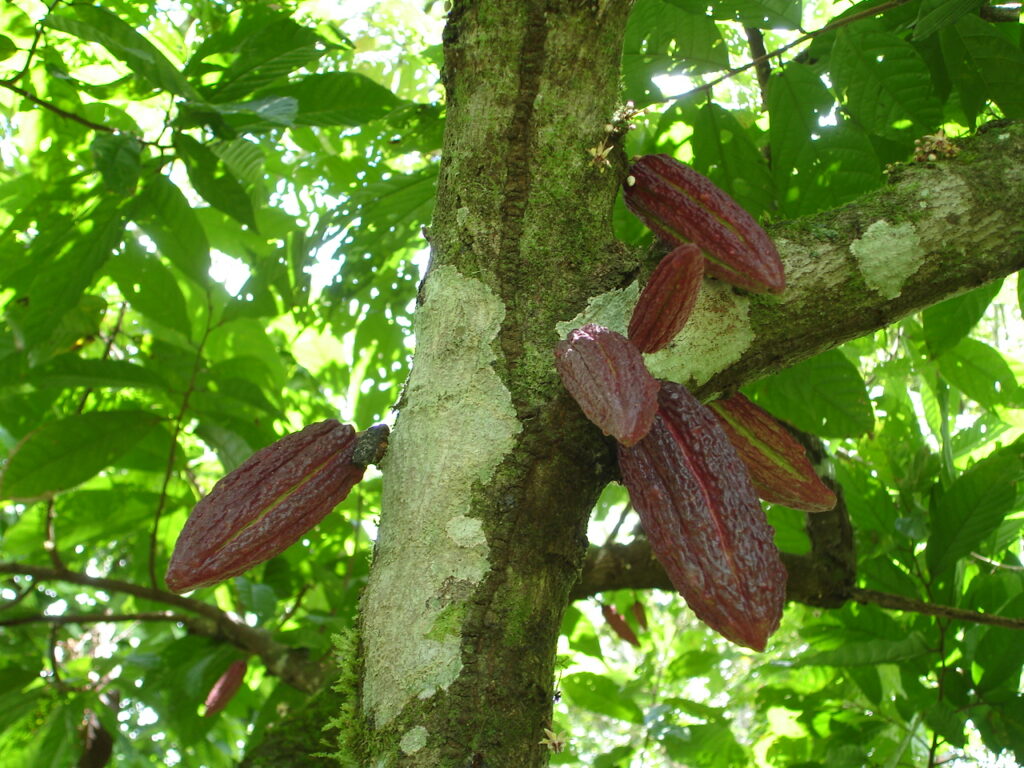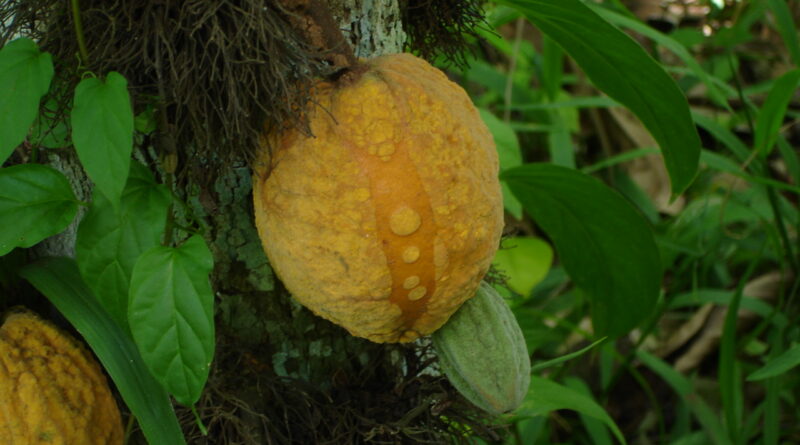India’s agricultural and processed food products export up by 25% to USD 13771 million in Q2
Cocoa (Theobroma cacao) faces more complex and interactive pest, disease and weed problems than any other tropical tree crop. Theobroma genus (plant family Malvaceae) comprises a group of naturally, short-stature trees native to the rain forests of the Amazon Basin and other regions of Central and South America. Some have been harvested in the wild for thousands of years by Amerindians (Native American Indians), but T. cacao which is an under-storey tree of the Amazonian rain forest is the only species to have been cultivated on a world-wide scale.
Cocoa started to spread from its Centre of Origin in the sixteenth century carried mainly by the Spanish and Portuguese, first into Venezuela, Caribbean islands like Trinidad (1525) and Jamaica and then right into South East Asia and the Indian Sub-Continent.
Cocoa was a relatively late arrival into Africa, first recorded on the West African island of Fernando Po in 1855, from where it was introduced into mainland West Africa around 1879. Most of today’s biggest producers of this New World tree-crop commodity are Old World countries such as Cote d’Ivoire, Ghana and Nigeria in West Africa and Malaysia and Indonesia in South East Asia.
The small island of Trinidad at the southern end of the Caribbean Sea was once one the world’s largest producers of cocoa although today’s commercial production is miniscule by international standards. Most of the world’s definitive research and development into botany and agronomy of cocoa was carried out in Trinidad during the 19th and 20th centuries, first at The Imperial College of Tropical Agriculture (ICTA) and more latterly in the Cocoa Research Unit and Departments of Botany and Crop Science at the University of the West Indies (UWI).
Trinidad is home to the International Cocoa GeneBank (ICGT) regarded as the most valuable collection of cocoa germplasm in the world and comprising around 2,200 accessions and represented by some 12,000 cocoa trees. Many of the pictures of cocoa which appear in this and the following two articles Part I, II and III were taken in Trinidad.
Cocoa in the shade
Theobroma cacoa is a wild tree taken from its natural, deep-shaded, lower-storey environment in the Amazonian rain forest and grown on a truly massive scale, mostly in monocultures, right across the humid tropics. The first cocoa estates were established in forested areas where the required shade could be provided by leaving some tall forest trees in situ when the virgin forest was cleared and planted with cocoa.
But new cocoa is invariably planted on previously cropped land and can never be provided with the natural, quality shade normally received when growing naturally in its evergreen rainforest environment of the tropical Americas.

Quality shade is more or less essential for cocoa and especially the temporary shade provided for cocoa nurseries and newly planted stands which require only one quarter of full intensity sunlight. Cocoa trees grown within properly designed and managed stands provide a large measure of mutual self-shading and will form ‘closed’ canopies that keep out a significant proportion of the sunlight.
On balance cocoa does best when the crop is provided with at least some permanent shade and not only for growth, development and yield. Permanent shade minimises physiological stress and protects trees from insect pests like mirids that can easily be antagonised into major pest status when exposed to high light conditions.
By the same token the range of fungal and fungus-like pathogens which cause disease in cocoa is largely a reflection of the shady, moist and high humidity conditions created and maintained under the tree canopy. As a relatively slow-growing and shade-loving tree cocoa cannot compete with the fast-growing and sun-loving plants whether grasses, herbaceous dicotyledonous weeds or other shrubs and small trees.
As a small tree occupying the under-storey niche, cocoa is shaded by a large number of different tree species at varying heights in the rainforest canopy. When cocoa is grown within an estate cropping system tall leguminous trees like Erythrina species are planted to provide upper-storey shade. And much shorter legumes like Gliricidia sepium and Leucaena leucocephala and various types of Musa (desert banana and plantain) to provide an additional layer of shade foliage just above the cocoa canopy.
Provision of shade for cocoa by taller trees in mixed stands is aided by harnessing cocoa’s propensity for mutual self-shading. After several years of growth the terminal bud dies and in doing so stimulates some half dozen lateral buds at a position known as the ‘jorquette’. These buds grow into horizontally displayed fan branches. When cocoa trees are planted at a sufficiently close spacing and are properly pruned to leave 4-5 growth points at the ‘jorquette’ the branches of neighbouring trees will overlap to form a closed canopy. The overall aim of pruning is to produce a tree canopy shaped like an inverted cone with removal of all unwanted growth below.
Too much direct sunlight falling on the cocoa canopy reduces the rate and the quality of foliar growth and cocoa pod production, antagonises insect pests like cocoa mirids or capsids (Miridae) and permits the growth of sun-loving grass and broad-leaf weeds with which shade-loving cocoa trees cannot compete.
That said the low-light, high-humidity microclimate which is maintained within a closed cocoa canopy encourages moisture loving fungal pathogens like Phytophthora, as well as epiphytes including lichens, algae, mosses, ferns and bromeliads over the trunk and branches of the trees. Cocoa is what it is with specific strengths and weaknesses because of the natural deep shade environment in which it naturally grows. Shade provision in cocoa and its role in pest, disease and management is very much a question of balance. Enough shade to minimise mirid activity and prevent strong competition from sun-loving tropical grasses but with sufficient aeration and maintenance of humidity levels to prevent outbreak of diseases such as Phytophthora pod rot and stem canker caused by fungus-like Phytophthora pathogens, as well as copious, excessive growth of epiphytes on the cocoa trees

